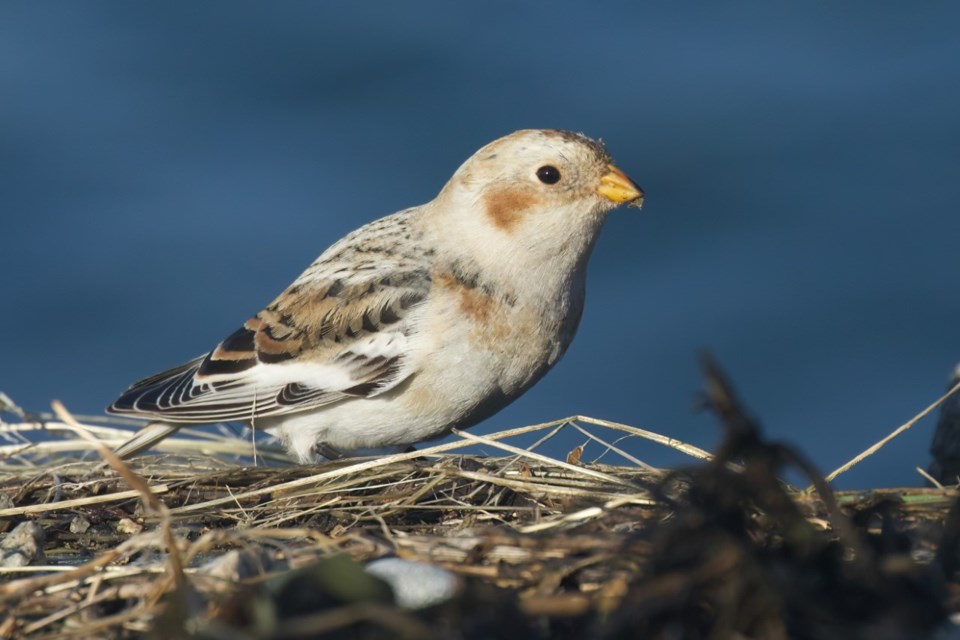A sure indicator that it’s mid-November was the overflight of trumpeter swans on the afternoon of the 7th with about 100 birds noted in a number of small flocks. Trumpeter swans breed on wooded ponds largely north of 60 and most winter along the ice-free coasts of B.C. and south-east Alaska. There is a regular passage of birds southward over the Sunshine Coast to wintering areas in the Fraser delta and Washington state, and we see these birds heading north again during March. A small number of birds winter on the Sunshine Coast where they frequent the estuarine areas at the heads of the inlets and irregularly on various woodland ponds such as Phare Lake and Pud Lake in Halfmoon Bay and the Pender Harbour lakes. Occasionally a bird will be noted on Trout Lake and they even turn up on local golf course ponds. Trumpeter swans are the heaviest flying bird in North America.
Another harbinger of winter was present at the Roberts Creek jetty for four days, Oct. 27 to 30. Snow bunting is a small, largely white bird that breeds on the Arctic tundra and winters on the prairies with an occasional straggler to coastal B.C. It only averages about one record per year on the Sunshine Coast, so is always welcomed by local birders.
The Roberts Creek jetty is one of our local birding hotspots with almost 200 different species recorded there over the years. A winter visit can yield about 30 species in an hour or so. Much of the action is out on the water and binoculars and a telescope are mandatory to see and identify many of the birds present. Warm clothes are also mandatory! The jetty area is attractive to birds because of the adjacent estuary, which attracts a variety of ducks, shorebirds and gulls. Passerines (perching birds) are present along the jetty (see the reference to the snow bunting above) and in the shrubs and trees around the parking lot. A reliable winter attraction is the presence of American dippers foraging in the creek. One or more birds can occur in the estuary, around the bridge, or in the creek upstream from the bridge…they move around!
By mid-November any lingering summer species are extremely rare. There have been a couple of reports of yellow-rumped warblers but this species is half hardy and it can winter in B.C. On Nov. 4, Fianna W reported a clay-coloured sparrow at Wakefield Creek. This is a coastal B.C. rarity and might be the same bird photographed at the Sechelt Marsh on Oct. 17/18. We will never know! Also on Nov. 4, Kaiden Bosch observed a pair of mountain bluebirds in the Egmont area for a rare winter record.
To report your sightings or questions contact [email protected] or 885-5539. Good Birding.



